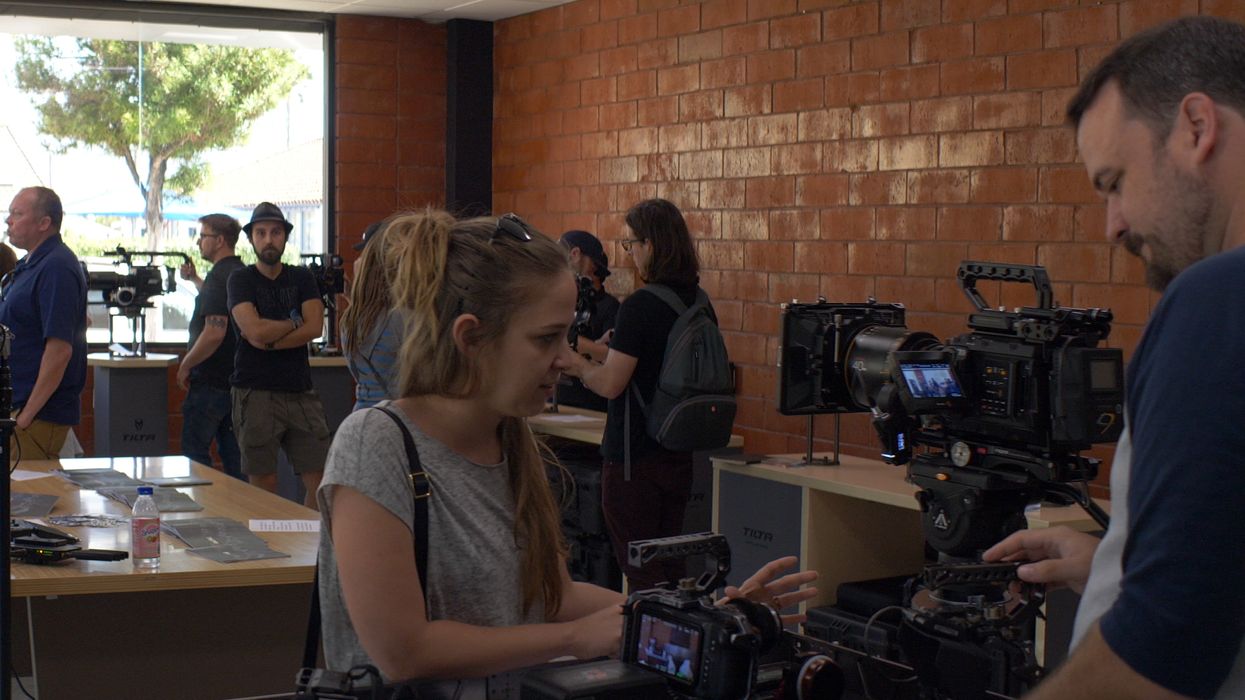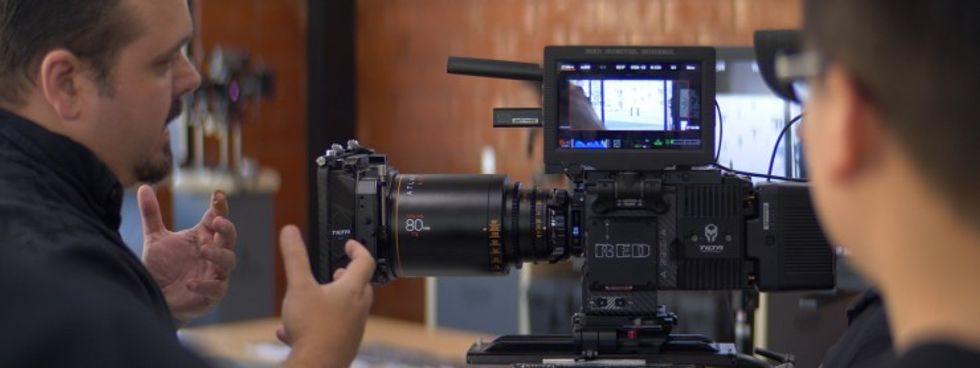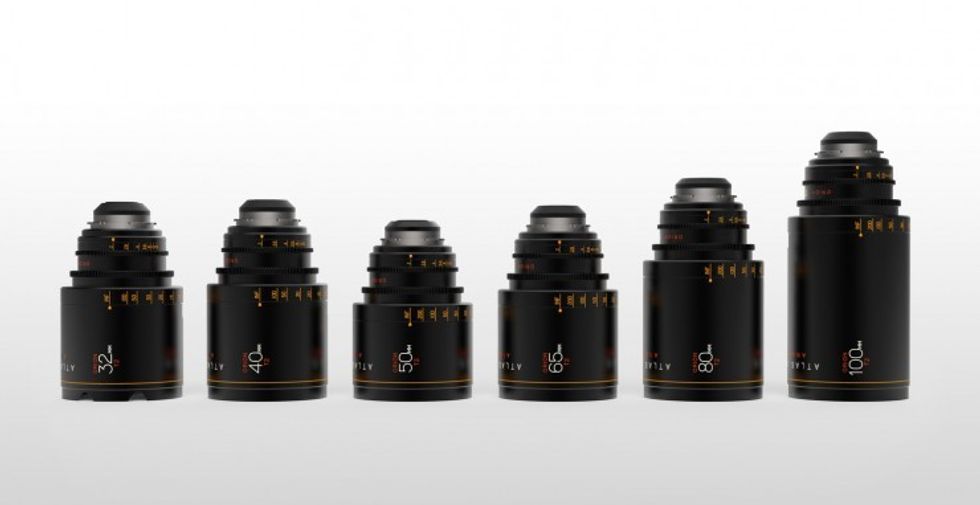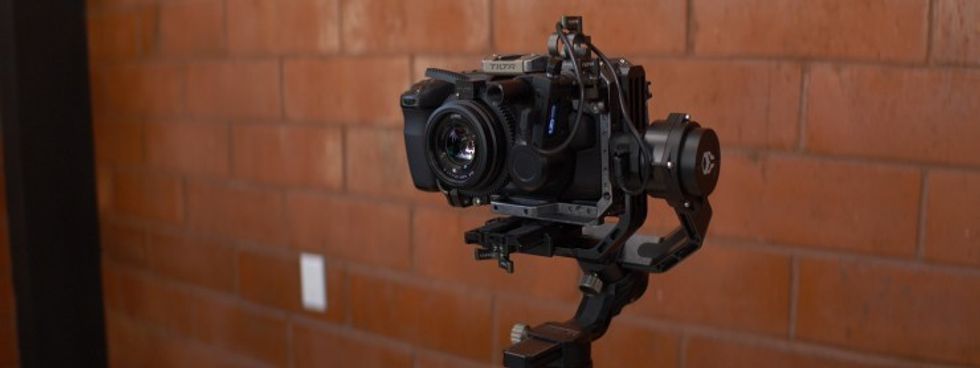Showcase: Getting Our Hands Dirty with New Gear from Tilta and Atlas Lens Co
Tilta and Atlas Lens Co. teamed up to showcase their latest products.

Tilta hosted a hands-on event for filmmakers at their headquarters in Burbank.
Designed to promote gear both from Tilta and co-sponsor Atlas Lens Co., the event offered cinematographers a chance to try out both pro and prosumer rigs outfitted with various combinations of Tilta products.
Let's take a look at their latest offerings:
TE-ND PL mount
Up front and center: the TE-ND PL mount for RED. This unit replaces the standard PL mount on RED cameras and contains an electronic variable ND filter, which draws power directly from the camera body. Since RED cameras don’t contain internal ND, this device provides a handy solution for DPs who need to quickly adjust exposure on set. Although earlier prototypes offered up to 11 stops of reduction, Tilta seems to have scaled back a bit in order to limit the color shift that had been present in their previous models. The TE-ND on display at the event ranges from 0.6 to 2.1, for a total of seven stops.
Although Tilta originally announced the TE-ND back in the fall, their new prototype also includes wireless control. Previously, operators could only adjust the filter through a switch on the lens mount, but with the new model, they can also assign ND variation to one of the dials on Nucleus-M, Tilta’s wireless lens control system. To shoot without ND, it’s possible to remove and replace the filter with clear glass by sliding it out through a hatch on the side of the mount.
According to Anatoliy Ogay, Tilta's Director of Marketing, "the product is going through the final stages of testing and will be ready to ship by November of this year." An employee at the event estimated the unit would be available for around $1,200 (!) but emphasized that this isn’t a confirmed price.
Orion Series lenses
Although Tilta hosted the event, they weren’t the only company showing off on Friday. Atlas Lens Co. was also present and outfitted every demo cinema rig with anamorphic primes from their Orion series. We’ve covered Atlas Lens Co. a few times since they previewed their 65mm prototype at NAB in 2017, and since then, the Burbank-based lens crafters have continued to expand their lineup. The Orion family now contains six prime focal lengths: 32mm, 40mm, 50mm, 65mm, 60mm, and 100mm. Dan Kanes, Atlas’ representative at the event, explained their goal for the product line:
“The Atlas Lens Co. Orion Series lenses are designed for any cinematographer looking meld classic anamorphic cinematography techniques with modern cinematography needs. As such, when you shoot them wide open they have a slightly more vintage lens feel with a bit more spherical aberration or "softness" when stopped down to a T2.4 or T2.8 they become much more modern and a lot of that spherical aberration goes away. What makes them slightly more modern than most vintage anamorphic lenses is their extremely low distortion - when there is distortion, it's a friendly classic, human feeling Barrel distortion, rather than an unusual and "warpy" pincushion distortion. They also have extremely low field curvature. Field curvature is why certain lenses have focus fall off at the same focus distance - so for instance - some lenses when focused at 4 feet, are only focused at 4 feet in the center, the sides may be focused at 3 feet, 2 feet, etc. - so we generally have a better focus characteristic throughout the focus field than many vintage anamorphic lenses, and possibly significantly better than quite a few modern anamorphic lenses... Because of their high quality-to-price value proposition, they are also designed to be a profit engine for cinematographers and rental houses in large as well as smaller scale markets where high-quality anamorphic lenses may previously not have been available or accessible at all.”
Each lens is available at T2 for around $8,000, except for the 32mm, which retails for $9,000. Atlas began shipping lenses in Q2, 2019, and currently estimates a 6-7 month wait time for new orders.
Tiltamax Gravity G2 and Nucleus-Nano
While the event focused on professional cinema rigs, Tilta had a few setups for the prosumer market as well. Of these, perhaps the most interesting was their combination of the Tiltamax Gravity G2 gimbal with the Black Magic pocket cinema camera and the Nucleus-Nano wireless lens control system. I’ve never invested in a gimbal for my mirrorless rig because I almost always shoot with old manual primes. The force required to hand-focus these lenses typically negates a gimbal’s stabilization efforts, so I’ve stuck with a shoulder rig for most projects. Tilta’s demo rig showed me that it’s possible to add wireless manual focus to a single-arm gimbal without breaking the bank. The Tiltamax Gravity G2 retails for $730 and the Nucleus-N retails for $229.
Take that, autofocus!




 No Film School's coverage of
No Film School's coverage of 









